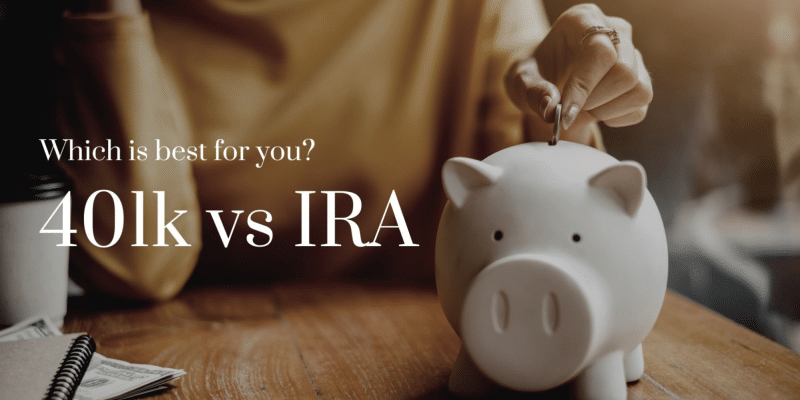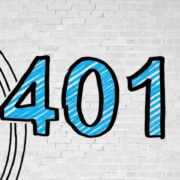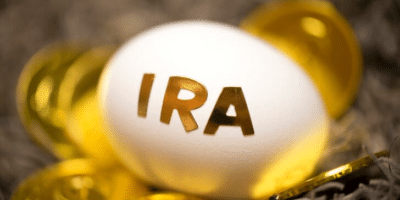The saddest thing to see is someone having to work past their retirement age to pay their day-to-day expenses. It is meant to be a time of enjoying much-needed rest and that life can offer, given all the sacrifices done over the years. However, this ideal retirement lifestyle needs financing. Outside of all other investments, IRA and 401k investing are tailor-made retirement investment options.
IRA or 401k?
How do IRA and 401k investing work, and can the two be combined? An understanding of what IRA and 401k accounts are is essential before attempting to answer these questions.
IRA
IRA is an acronym for an individual retirement account for saving and investing for life in retirement. Therefore, the more encompassing definition would be individual retirement. In addition to the savings and investment account, arrangements would include all investment instruments set aside for their tax benefits and retirement income provision.
An individual can choose from among four IRA types depending on the kind of taxation incentive sought:
- Traditional IRA
Contributions are tax-deductible, but the retirement withdrawals are taxable at the ordinary income tax rate. For example, if contributing $5000 yearly, the taxable income reduces by the same amount. The maximum yearly contribution is $6000 except for contributors over the age of 50 years maximum of $7000 via catch-up contributions. Gift ceases after the age of 72, and regular withdrawals after the same age are mandatory.
- Roth IRA
Contributions are taxable, but the distributions are tax-free. Contributions have no age limit as long as you earn an eligible income, nor are withdrawals mandatory. The yearly contributions cap is at the same rate as the traditional IRA.
- SEP IRA
The simplified employee pension, SEP IRA, is for self-employed individuals and their employees. Employees cannot contribute to the fund directly, but employers can contribute to them under this category. Taxation rates on withdrawals are the same as that of a traditional IRA. The maximum yearly contribution is 25% of the donation or $58000, whichever is lesser.
- Simple IRA
The savings incentive match plan for employees, Simple IRA, also applies to small organizations and self-employed individuals. Both the employer and employee contributions to the fund. Their contributions are tax-deductible. The maximum yearly employee contribution is $13500, and $16500 if aged 50 years and above.
401k
The 401k retirement investment plan’s inception is traceable to 1978. Since then, the planned growth to the most popular employer-sponsored American retirement plan is phenomenon-currently one of the critical benefits of an employment package.
401k is a qualified retirement investment instrument allowing employees to save a portion of their salaries for use in long-term investments with employers’ matching the employees’ contribution to a set limit.
401k contributions are tax-deductible, with the withdrawals attracting tax at the income rate. Currently, the maximum yearly contribution is $19500, for both traditional and Roth 401k, with an additional $6500 exception is catch-up contributions for those aged 50 years and above.
Does your employer offer a 401k match?
One way that employers attract the best employees is through 401k plans. Employers have a right to match an employee’s 401k contribution to a predefined allowable limit.
The employer contribution limit is:
- Either up to a certain percentage of the annual income.
- A predetermined dollar amount, regardless of the annual income.
Percentage match-up is in two ways. Either a 100% match-up to a percentage of the total yearly income or partial contribution with a maximum upper capping. For example, an employer offering 100% match-up on the annual contributions up to 2% of your income, which is $50,000, contributes $1000-maximum. However, to enjoy the total $1000 employee contribution, you have to contribute the same. Any additional contribution is unmatched.
The partial contribution plan is the most popular and widely adopted match-up method. The maximum yearly contribution to a 401k account is either 100% match-up employee contribution or $58000, whichever is lesser. Employers’ match-up does not contribute to the allowable individual yearly contribution capped at $19500.
The benefits of 401k match-up:
- Deferred tax benefits
Employer contributions aren’t taxable till withdrawal occurs at the income tax rate.
- 100% returns
Employers’ match-ups provide employees with a 100% return on their 401k contribution if it is made to ensure maximum match-up.
Are 401k and IRA different?
401k and IRA investments may seem the same on the surface, but they are not peas in a pod. Despite sharing some common characteristics, they have several distinguishing features:
- Employer match-up
401k are retirement plans set up by the employer for their employees. Employees contribute a percentage of their salary to the program with the employer to match the employee contribution to a certain amount. On the other hand, IRAs are individual-driven retirement plans utterly independent of the employee-employer relationship.
- Annual contribution
The IRS has different limits for 401k and IRA yearly contributions. However, 401k offers employees a better deal given that the annual contribution is $19500 for individuals and $58000 for the employer match-up. This contribution further increases if one is older than 50 years old and above: an additional $6500 on individual and employer contributions.
The IRA maximum yearly contribution in comparison is $6000 for a traditional IRA account with an extra $1000 for those aged 50 years and above. The best IRA limit is a Simple IRA which allows for up to $13500 with an option for $16500 maximum contribution for those aged 50 and above.
- Vesting requirements
In the 401k plan, there exist vesting requirements. However, ownership of employer contributions is after the passage of a predetermined employment period, usually five years. When it comes to Simple IRA and SEP IRA, no vesting requirements-ownership passes to the employee immediately on employer contributions.
- Investment options
401k plan money is an investment in asset classes deemed acceptable risk tolerance by the employer, in most cases mutual funds. IRA accounts, on the other hand, held by brokerage firms, investment firms, or banks, offer the account holder a plethora of investment assets to choose from including, CFDs, stocks, real estate, and bonds.
Which is better, 401k or IRA?
The adage goes, ‘never put all your eggs in one basket.’ Retirement investment planning is the same. Both 401k and IRA are exceptional retirement plans, and having both is the ideal situation.
However, the approach on how to go about having both is dependent on:
- If an employer offers a match-up on 401k
Is it advisable to start with the 401k contribution and max on its contribution before turning to IRAs? Why? 401k offers a higher contribution to the deductible tax income compared to IRA.
- If an employer doesn’t offer a 401k match-up
Instead, it concentrates on IRAs and maxes the contribution before turning to 401k. Why? IRAs held by brokers or investment firms offer investing avenues for maximized returns not available in a 401k account. Once IRA yearly contribution maxes, turn to the 401k account to enjoy the pre-tax deposits.
When can you ignore 401k?
401k is a great way to achieve financial independence in retirement, but there are situations when it is safer to ignore it, either altogether or in the short term:
- Bad employer 401k plan
Where the investment fees, management fees, and risk tolerance levels of the resulting 401k plan fund are high, it is advisable not to invest.
- Long-term tax implications
A significant driver of retirement planning is favorable tax rates. In situations where the retirement income is from several sources with no tax exemptions, the taxation of 401k will be higher, and investment in the 401k plan is inadvisable.
- Debt
It is advisable not to start investing in 401k plans if you are in debt or have no financial safety net for eventualities. This is because the would-be contributions create a financial safety net and pay off debts rather than withdraw the 401k funds prematurely, attracting penalties to settle accrued debts or taking a loan on them.
























Comments